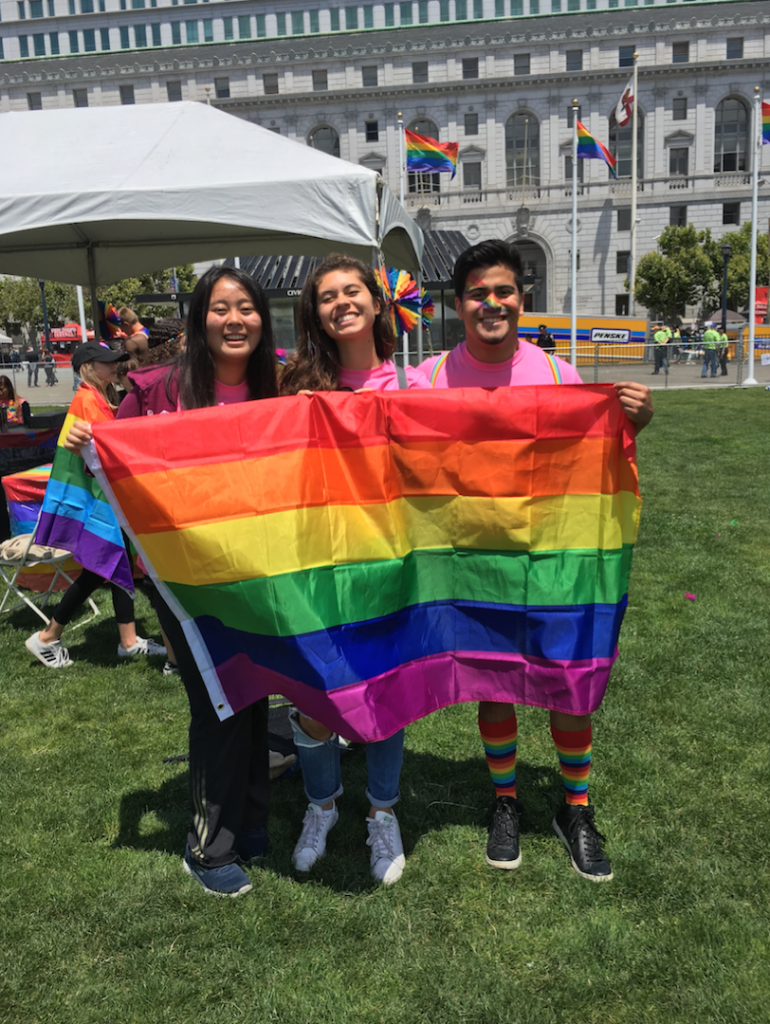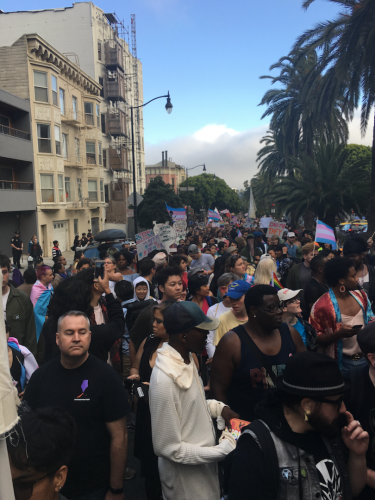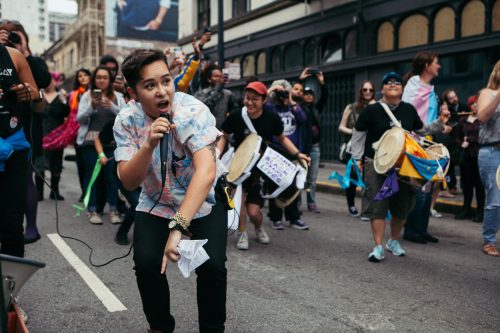

Photo by Xanh Tran
Last weekend, I went to 2017 San Francisco Pride, the “largest gathering of the LGBT community and allies in the nation.” On Friday afternoon (June 23) I marched on Trans March with API Equality; on Saturday (June 24) I volunteered for Larkin Street Youth Services during the Pride celebration; on Sunday (June 25), I marched in the Pride Parade with API Queer Women & Transgender Community (APIQWTC).

Among these three events, the Trans March on Friday with API Equality is the most thought-provoking for me. Compared to the overwhelming pride celebrations, the Trans March is more political, radical, striking, reflective, and addressing issues beyond the LGBTQ community itself. From Dolores Park all the way to Powell Station, we were marching in fog and drizzle, in the public gaze and across inhumane skyscrapers, shouting in hope and somehow solemnness, and in solidarity and community. API Equality approached trans issues from a different perspective, challenging the Western hegemonic discourse, complicating the intersectional identity, and subverting the system of power and oppression.

Photo by Xanh Tran

Specifically, first, we did not employ the western-centric individualistic discourse on LGBTQ issues including “be who you are” and “love is love.” This western narrative neglects the complexities of API culture including the social collectiveness and conformity, evokes sympathy and other emotional reactions that do not last for long, and fails to incorporate the fundamental analysis of power and discrimination. Second, we tried to complicate what constitutes queerness and how other identities affect one another. API Equality focuses on the queer population in Asian and Pacific Islanders and prioritizes the minority within the queer community like trans people, immigrants, low-income people, and people with disabilities. It encourages people to care about identity issues beyond one’s own identity and fight on behalf the less privileged. API Equality is one of the few organizations that include international solidarity in the conversation, challenging the oriental reproduction of the East and colonial mentality on the Third World countries. Third, API Equality concerned beyond trans issues during the march, as we were advocating to rise up and fight back against institutional injustice, including police brutality and labor exploitation. We called for a civil society with people power, resistance, and solidarity.

Photo by Xanh Tran

Photo by Xanh Tran
Compared to the Trans March, the Pride Parade on Sunday, being an overwhelmingly huge celebration, attracted more people from all over the world and different identities and backgrounds. I went marching with APIQWTC, an organization that focuses on Queer Women & Transgender Community. Holding the banner of APIQWTC at the frontline, I saw the crowd at the sidewalk cheering and celebrating. The Pride Parade was more about public visibility and being there for each other, and I was very surprised to see so many Asian people during the Pride either marching or watching, a population stereotyped as being conservative. As a queer activist, I witnessed how impactful and important a visible queer community is for LGBTQIA+ individuals and their affiliates in a homophobic cis-heteronormative society. We see each other, going through similar struggles, fighting for similar ends, and sharing common emotional experiences, as we are deep down human beings. This communal force is powerful, transcending individual barriers and bringing us together to fight for what we believe in.


Besides the Pride Parade, the Pride celebration at the City Hall drew people with a variety of costume, appearance, and self-expressions. As Eve Kosofsky Sedgwick argues, people across the spectrum of sexualities and expressions challenge the inherent stability of gender norms and social normativity: Queer couples celebrate their identities and simply enjoy the moments; people put on drag shows to question that gender is fundamentally a performance and inherently unstable; people wear the strangest and funniest costume to navigate how much deviation a society can accept and queer the gender and social norms. At the same time, heterosexuality does not come before homosexuality, but rather it is a product of it. The discourse of homosexuality as abnormal eventually produces the subject of heterosexuality and de-politicizes and naturalizes the existence of heterosexuality as the norm. Therefore, the queerness deviation de-naturalizes the heteronormativity and destabilizes how the cisgender heteronormative system operates.

